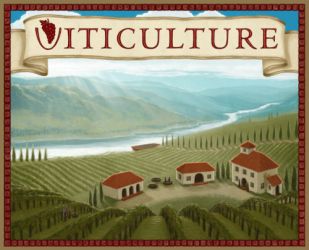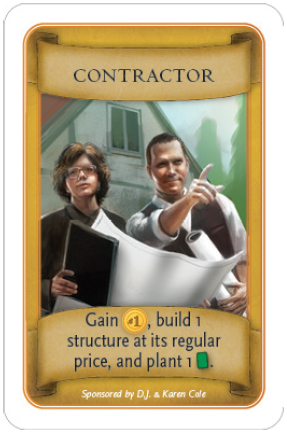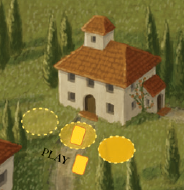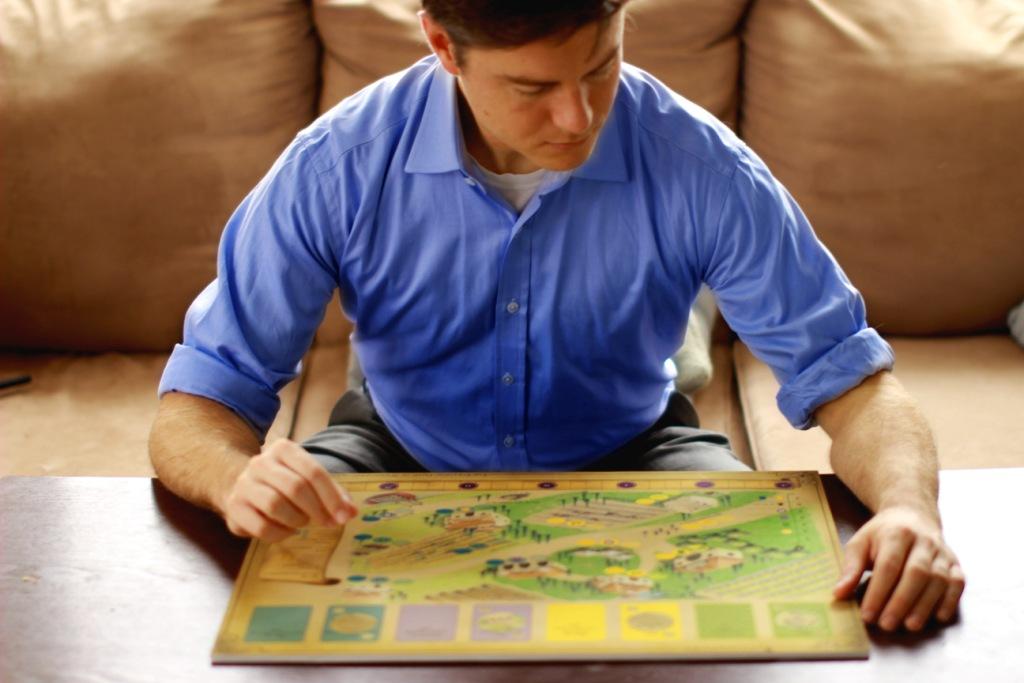Editor’s Note: As part of our Indie Spotlight for June’s Viticulture, we like to provide extra content about the game than merely a review. However, since we had interterviewed designer Jamey Stegmaier prior to this for their follow-up game Euphoria, and his own designer diaries are already pretty thorough, we didn’t want to repeat material that’s already out there. So we figured, why not let Jamey offer a few words himself on area that hasn’t been talked much about yet.
In that, we’re happy to present a brief guide on playing Viticulture, from one of the guys who created it.
![]()
Official Strategy Guide for Viticulture:
Top 5 Things to Consider
 I’ll say this right off the bat: If you avoid strategy guides because you like figuring out optimal game strategies on your own, you have nothing to fear from this strategy guide for my game, Viticulture.
I’ll say this right off the bat: If you avoid strategy guides because you like figuring out optimal game strategies on your own, you have nothing to fear from this strategy guide for my game, Viticulture.
Viticulture doesn’t lend itself to specific paths to victory. You can’t go into a game of Viticulture saying, “I’m going to follow strategy X.” If you do, you will probably lose. Viticulture is a game of flexibility and tactical pivots, as we’ll discuss in five key areas below.
Don’t Make Assumptions
Viticulture is a game of overcoming assumptions. It’s “The Strategic Game of Winemaking,” but don’t assume that you necessarily need to make lots of wine to win the game. It’s a game where you have the ability to plant many vines on your fields, but that doesn’t mean you should. It’s a game where you start with three workers and can add up to three more, but it doesn’t mean you must. It’s a game where you start with a Pinot in hand, but that doesn’t mean you have to plant it right away. It’s a game where waking up earlier gives you first pick in the Spring, Fall, and Summer, but you may not always need first-pick. Sometimes there are a number of viable actions, so you might as well get one of the later wake-up bonuses.
The game will reward you if you don’t make assumptions about the way you should play – decide your own winemaking destiny.
Draw Lots of Cards
 Although visitor cards can be used at any time during the game, many of them are very powerful at certain moments. Do not let the luck of the draw decide when you play visitor cards. Rather, draw lots of cards and hold them until the optimal time. The same goes for vine cards and wine order cards, which impact each other.
Although visitor cards can be used at any time during the game, many of them are very powerful at certain moments. Do not let the luck of the draw decide when you play visitor cards. Rather, draw lots of cards and hold them until the optimal time. The same goes for vine cards and wine order cards, which impact each other.
If you draw wine order cards that require lots of red wine, make sure you’re planting and making lots of red wine. Or draw more wine order cards so you have more flexibility it your overarching strategy.
If I draw a few wine order cards early on that don’t require me to build the large cellar, I simply won’t build it – that’s a turn and a lot of lira that I can spend doing better things.
Pay Attention to Other Players and Be Responsive
You absolutely must pay attention to other players, starting in the Spring and continuing throughout the year. If a player goes after that extra lira or vine card in the Spring, you have a good idea of what they might do in the Summer. When the Summer comes, if you get blocked from your first-choice space, consider other viable options, or hold off workers for the Winter.
You may really want to plant a vine the first year, but if you get blocked, view it as an opportunity to get more money and possibly more workers in the Winter instead. If other players haven’t planted a second field yet, you’d be the only player who can use the x2 harvest space – so you might consider planting on two fields to get more grapes on your crush pad.
Also, note that Viticulture is a tighter game with 2, 4, and 6 players, making the Yoke more valuable than in 3 or 5 player games…that is, if other players are harvesting lots of grapes.
Plan Ahead
While Viticulture is highly tactical, you need to consider a long-term strategy that takes into play your turn order on the 7th or 8th year when the game is likely to end. If you are going last on either of those years, you’ll need to fill wine orders earlier and have ways to get victory points in the Spring.
Also, consider the impact of money when planning ahead. Lira aren’t important at the end of the game (other than as a tiebreaker), so there is no need to get a money-making engine in place unless you have a plan for spending that money.
Moreover, you’ll need to plan ahead when planting vines – you don’t want two vines that each produce a 1-value red grape, because you can only have one such grape on your crush pad at a time.
Lastly, consider the special buildings like the tasting room and windmill when plotting your moves. If one of those structures plays into your strategy, build it as early as possible.
Maximize Opportunities
This is advice for every game, but it plays a huge role in Viticulture. There might come a time during the game, for example, when you plan on taking a certain wake-up slot, but another player surprises you and chooses a much earlier/later slot. If that opens up the door for you, take it.
 The bonus middle action spaces also play a huge role in maximizing opportunities. Why use one worker to plant one vine when you can use one worker to plant two vines instead? The same goes for all of the other action spaces. One of my favorites to maximize are the “play a visitor card” action spaces. Visitor cards are already quite powerful, so playing two at once can be a huge asset.
The bonus middle action spaces also play a huge role in maximizing opportunities. Why use one worker to plant one vine when you can use one worker to plant two vines instead? The same goes for all of the other action spaces. One of my favorites to maximize are the “play a visitor card” action spaces. Visitor cards are already quite powerful, so playing two at once can be a huge asset.
And perhaps most importantly, plan your crushes very carefully. Remember that when you choose the “crush grapes” option, you get to make any number of wine tokens of one type of wine. So you don’t want to crush every year – not even close. You might want to crush early on in the game if you have a specific wine order to fill, but otherwise you need to strategically time your crushes so you get the most out of them.
I’d like to think that this is just the tip of the iceberg when it comes to Viticulture strategy, but you tell me—have you uncovered some optimal strategies?

Jamey Stegmaier is one half of the duo that runs Stonemaier Games, creators of Viticulture. An an avid gamer and blogger, he hopes Viticulture is the first of many in a line of quality games. He can be found on Facebook, Twitter, or by emailing him directly at stonemaiergames@gmail.com.
Photo Credits: Contractor and Viticulture on Display by Stonemaier Games.
